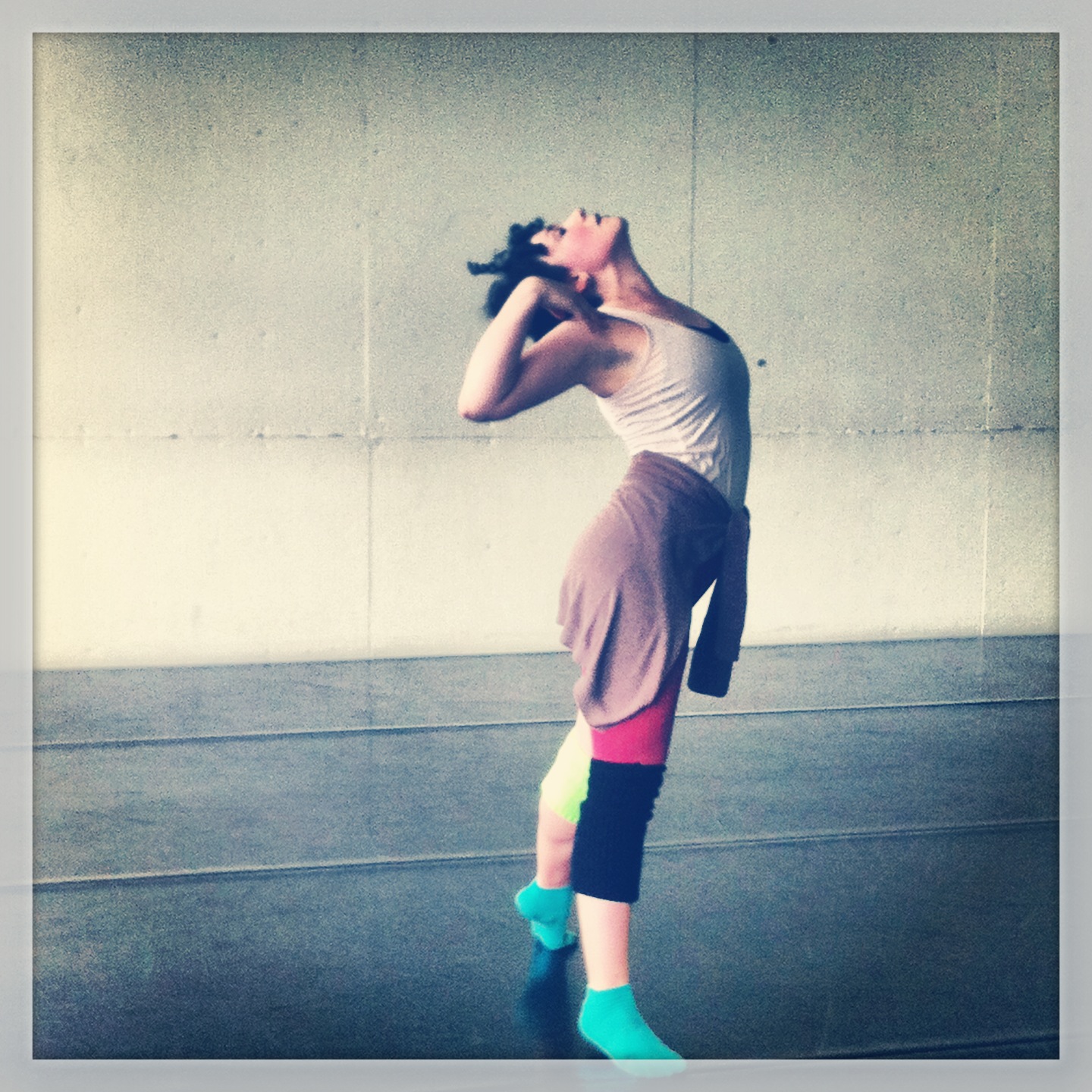Final notes from a Paris biology lab
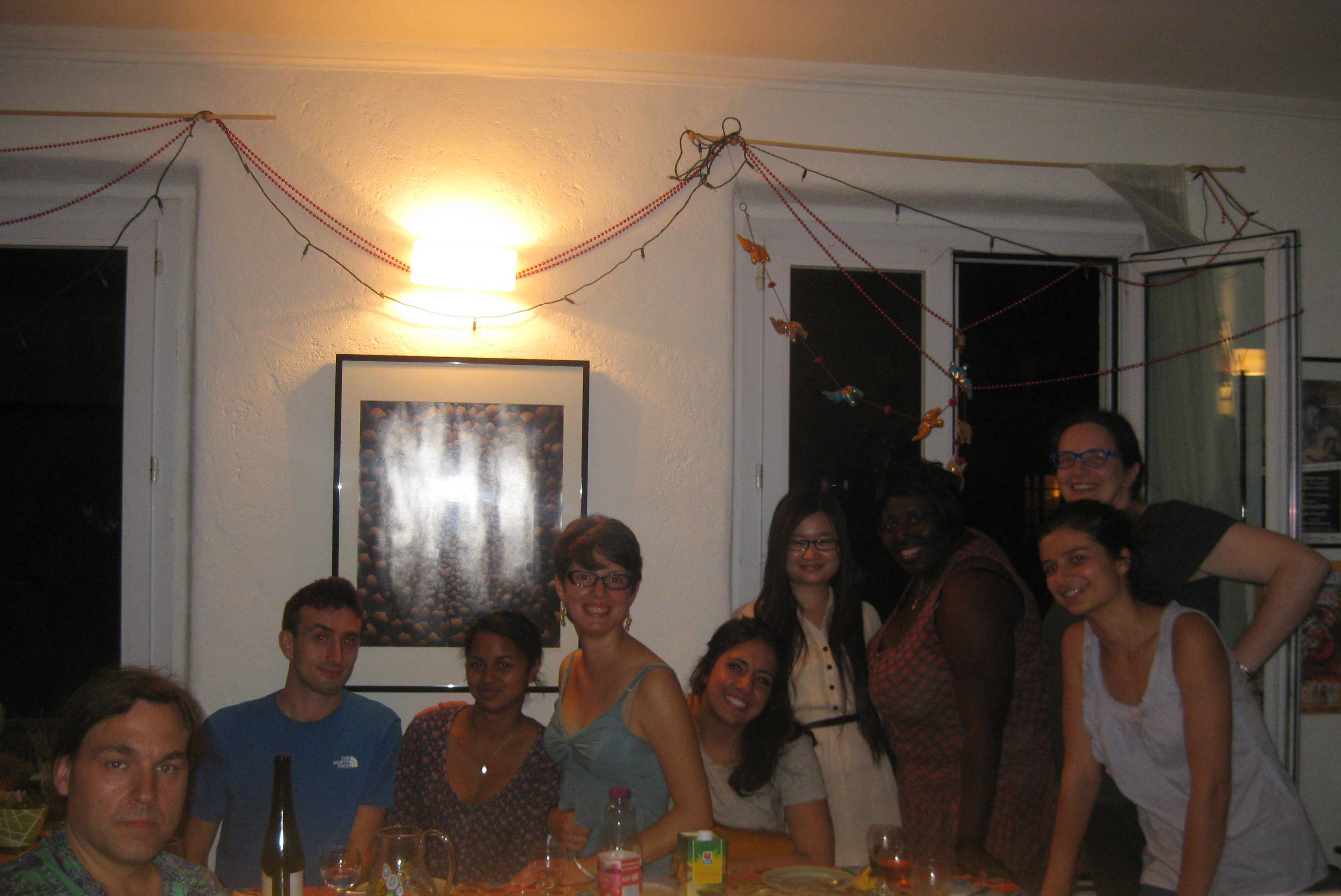
My practicum in the philosophic aspects of scientific research is technically over today. My internship at LBPA (Laboratoire de biologie et de pharmacologie applliquée) at ENS-Cachan was an amazing experience. I want to thank Bianca Sclavi and the teams at ENS-Cachan for being so kind and flexible to my non-scientific presence in their laboratories. I hope that I opened a few minds to the idea of the benefits of integrating the humanities with the physical sciences. I also want to thank Reed College for all of the support and aid that has made my summer such a grand success.
During my time as an embedded philosopher I have tried to ask questions that people somehow ignore in the lab. These questions attempt to expose the epistemic values that are hidden within the scientific method, and show how the physical sciences represent reality just as well as other disciplines. Due to the values embedded within research projects the physical sciences do not actually uncover "truths" of reality, but in fact the knowledge produced from a lab is similar to a fictional narrative. From deciding which graphs to choose for a report, which instruments to trust, or even the simple act of pipetting, there are always values that frame the scientific research. However, before I finish my summer project I would like to reintegrate the three themes of my practicum. One of my focuses was to look at the epistemological aspects of the scientific process.
I began by looking into how the research at LBPA is funded. It became clear that the process of applying for funding is completely flawed and it is now becoming more and more of a game of luck. The number of applicants grows every year, as does the need for labs to consider what they bring to society. This brought me to the second focus of my internship: broader impacts.
It is becoming necessary for research teams to consider the impacts of their research, and it is also becoming increasingly clear that the best way to accomplish this is through interdisciplinary (ID) and transdisciplinary (TD) research. Research teams who claim that their projects are only for the sake of science are losing funding. Researchers need to learn how to engage with other academics from different disciplines and with the citizens of their society in order to be competitive for grant money. My research on broader impacts led me to the third focus to my internship. Due to the importance of ID/TD I decided to investigate the state of ID/TD education and research in Paris.
It turns out that I’ve launched myself on a set of new adventures. I visited the Centre de Researche Interdisciplinaire (CRI) in Pairs, and learned a lot about their programs for ID/TD research and education. I met with their curriculum designer to find ways that I can become involved with their courses on the philosophy of science this fall. This might be in the form of a presentation describing my practicum, or I might lead a discussion group every week on science and society studies and the philosophical questions intrinsic to scientific research. This is all still in the planning stages, but I am looking forward to working with CRI this fall.
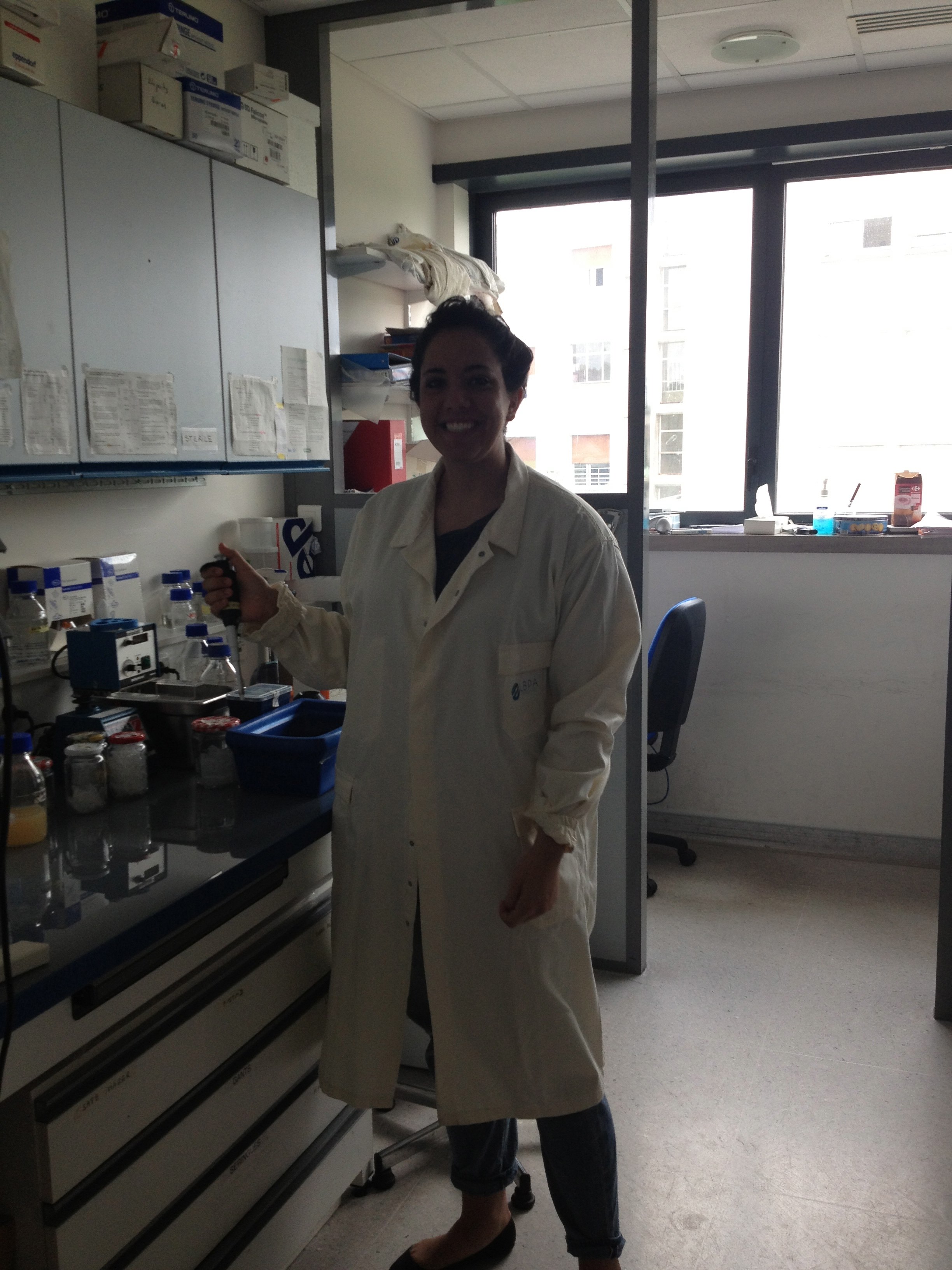
So, all in all I would have to say this summer has been a success. My final report on my experiments at LBPA contests the current understanding of the structure of a cell, and hopefully further research on this area will lead to breakthroughs on how the inner structure of the cell effects DNA replication. To learn more, visit the link below to my final report. Also, one of my hopes for this internship was to establish relationships that could potentially being me back to Paris in the future, and I believe that there is a strong possibility of that happening.
I hope you all have a wonderful month of August! I will be off reading Adieux by De Beauvior on a beach in Greece. I am looking forward to a break from reading science and STS articles….
-Maya Frodeman, Reed College ‘15
Continue reading Final notes from a Paris biology lab
Locating the Past, Chapter Two Language and Culture in BNF Manuscript 375
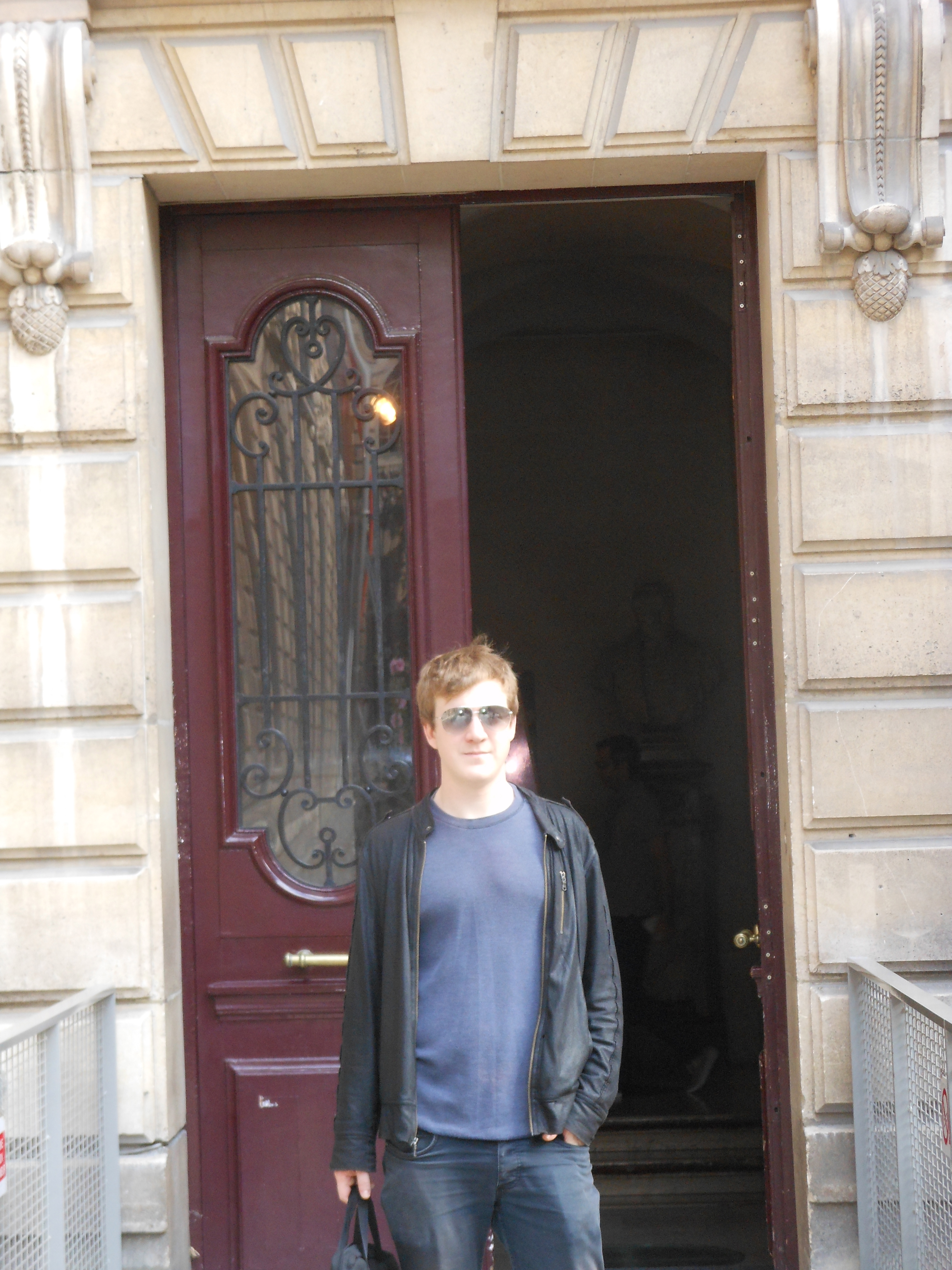
Lukas
As with my first blog post, I will first summarize my research at the national library, then say a few words about my home and social lives in Paris.
My research has progressed well since the last round of blog posts. Readers may recall that my preliminary goal as a President’s Summer Fellow was to identify the geographic origins of the second text in Ms. BNF 375, a medieval French version of the Apocalypse. I spent my first month in Paris doing just that. I first performed a dialectal analysis to determine the provenance of 375’s copy of Explication. In brief, the copyist wrote in picard, a Northern scripta, or written dialect. However, I also noticed that the text opens with a prologue, and that this prologue exhibits a number of linguistic traits inconsistent with Picard writing. Working under the assumption that the language of the prologue is also that of the original text, I was able to link Explication to a prominent 12th-century copyist, Gilbert de la Porrée, bishop of Poitiers from 1142-1154. In the end, then, I can make a pretty tenable connection between 375’s Apocalypse and the city of Poitiers.
Sara Post, Zenger Farms Intern

Each point represents the address of a Food Scout participant. Colors groups addresses by zip code, and the black arrow points to the site of Lents Farmers Market
While half the work of running a youth education booth—called Food Scouts-- at Lents International Farmers Market is the improvisation of wacky games, the underlying other half of the work is data compilation. Because the program relies, somewhat begrudgingly, on funding from Whole Foods, it is my job to take note of participant numbers as well as their demographic each week. For example, I've now signed up 206 kids between the ages of 5 and 12, but we are still 94 short of the 300 goal. On July 28th, 15 new kids joined, but on July 21st, there were 24 new scouts. I might look at geographical outreach the week before (did I post fliers in neighboring communities close by? Did I post fliers in wealthy neighborhoods that already sustain flourishing markets?) and compare this outreach using map points with the home addresses that the parent/guardians of the Food Scouts share with me.
Continue reading Sara Post, Zenger Farms Intern
Christina Gremore, Social Venture Partners International Intern
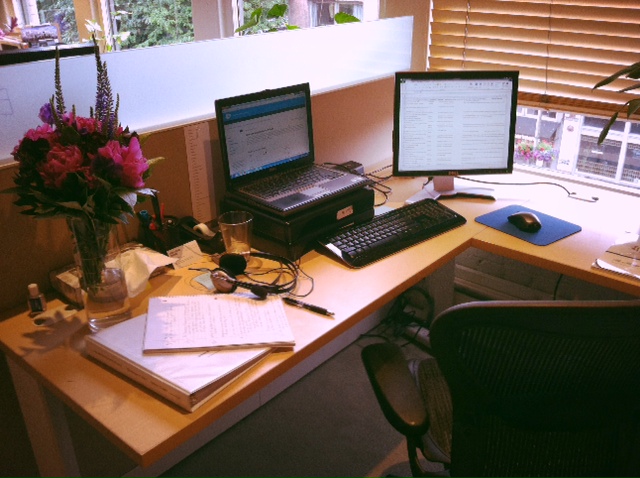
I’m writing this blog post having just finished a check-in meeting with my supervisor. I was showing her my ideas about how SVP could adapt Salesforce.com’s powerful features and tools to foster a greater degree of collaboration between Partners, among staff, and across the network. For example: I’ve created a survey in Flow Designer that will automatically update the Partner’s record in our database with the kind of granular data around professional skills that helps SVP staff make a solid match between Partners and Investees. With more accurate and easily searchable information, SVP can more efficiently reach out to Partners and avoid letting those with valuable skills go untapped.
I’ve also been looking into Salesforce’s Self-Service Portal. Originally designed to let customers interact with service reps when trying to resolve a case, I’m recommending that SVP use it to allow SVP staff and Partners to communicate with each other about an Investee Project. Right now, such communications happen mainly via email. Keeping these conversations in the central database will allow others across the network to access the knowledge captured in the projects.
Continue reading Christina Gremore, Social Venture Partners International Intern
A Conversation with Erik Speckman '91: Mentorship and Alumni Engagement
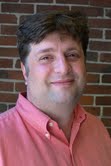
BH: Erik, you’ve been in the trenches as an alumnus for a long time, trying to come up with great ways to facilitate alumni engagement with students. How do you think we’re doing today?
EAS: It has been about a decade since my own engagement with the alumni association moved beyond organizing chapter social events and my class reunion. That shift was motivated by a personal interest in helping students and alumni with what we’ve come to call “Life Beyond Reed.” Even then, I wasn’t alone in my interest, there were other people, on and off the alumni board, who had their own take on the topic.
Notes from a Paris Biology Lab, Presidents Summer Fellowship, Ch 2
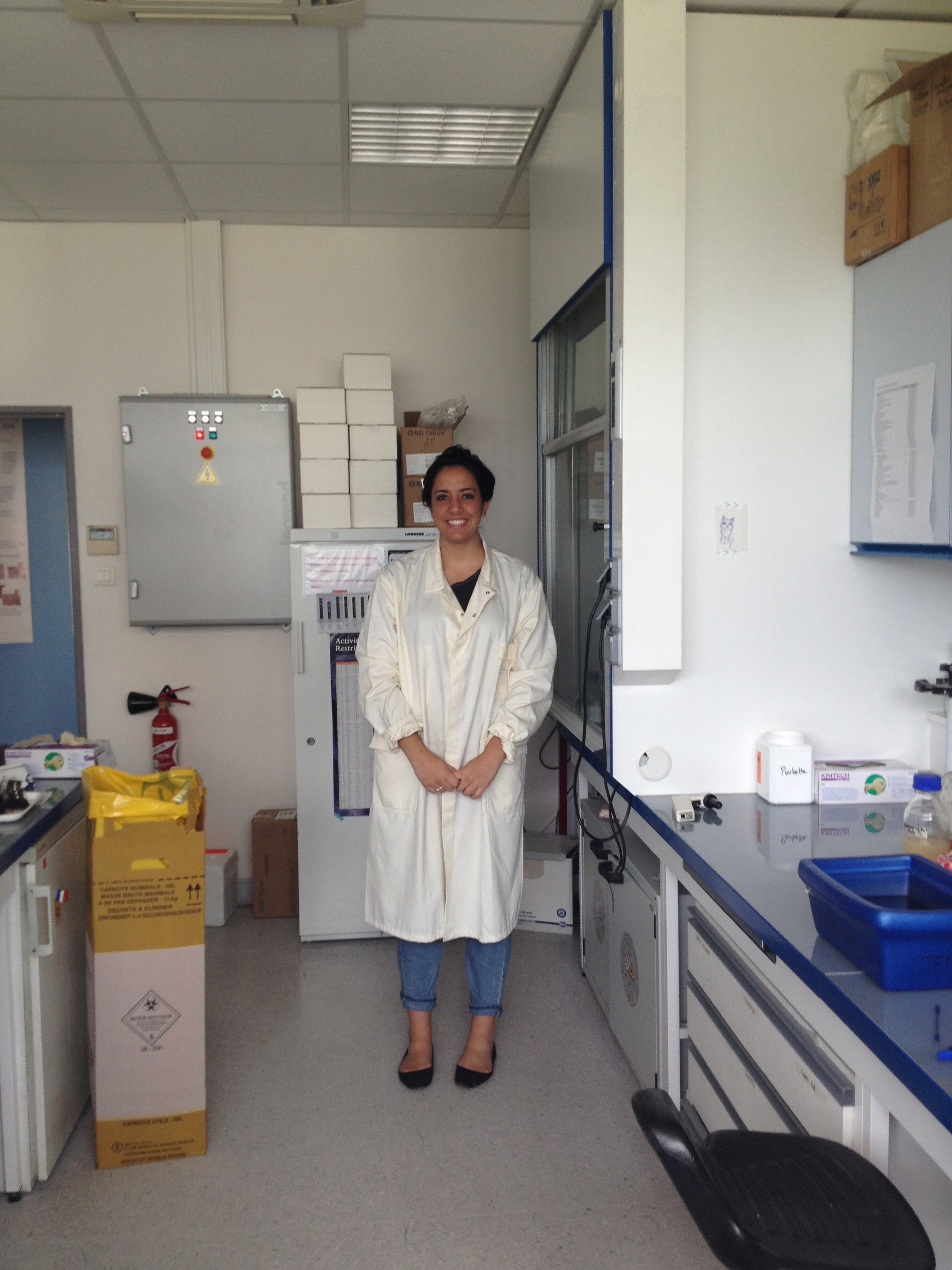
Lab notes
Hello! I am starting the beginning of my fourth week of my internship here in Paris! Wow, time goes by very quickly.
Today I read a great article called Disciplinarity: An Introduction by David R. Shumway and Ellen Messer-Davidow. It had a sweeping overview of the history of disciplinary education, and cited many of the current scholars of the transdisciplinary revolution that is catching on in academia. It was fascinating, and I hope to re-read it later tonight. I also did some research on William Whewell, a 19th c. polymath. He wrote on so many subjects that it is hard to get an idea of his character, but it is clear that he was an influential thinker in Britain. He is most well-known for his philosophy of science, history of science and moral philosophy (SEP). Some neat facts about him are that he coined the term "scientist," and that before him scientists were "called natural philosophers." Ha! The irony! I wonder how many scientists are aware of the philosophic implications behind their title…. Whewell was also very close to the influential scientists of his time. Darwin, Faraday and others would come to him to invent terms such as “anode,” “cathode,” and “ion” (those were invented for Faraday). Anyways, Whewell is someone who I hope to do more reading on. He seems like a great mind and his work is very pertinent to my studies.
Continue reading Notes from a Paris Biology Lab, Presidents Summer Fellowship, Ch 2
Meet Kendall Taggart '09, Center for Investigative Reporting
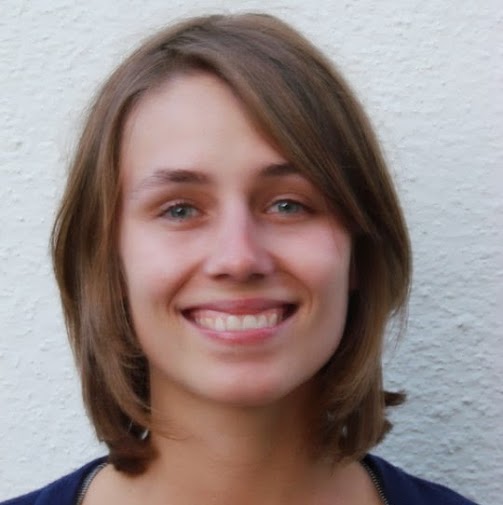
Kendall Taggart, Anthropology major and class of ’09, is a now a reporter for the Center for Investigative Reporting. She offers a few words of experience and insight from her travels from Reed into the world of investigative journalism. She demonstrates that doggedness and determination can never be overvalued in the pursuit of your ambitions.
M: Tell me about your time at Reed- how did Reed set you up to pursue a career in investigative journalism?
K: I loved Reed. It sets you up well to think. Not so much to get a job though, I think. I didn’t leave Reed having anything to show for my journalism ability. Actually though, I think Reedies are well set up, they just don’t know it. They’ve learned critical thinking, how to take on a problem and know how to solve it. With journalism, you’re rarely the expert. You have to rely on others, and know what’s BS and what’s not.
Continue reading Meet Kendall Taggart '09, Center for Investigative Reporting
Japanese Woodblock Printing, Presidents Summer Fellowship, Second Chapter
Work in the studio is well under way with my instructor Richard Steiner, who has been teaching Moku Hanga, or Japanese woodblock printmaking, for over twenty years and is an established artist in Kyoto. His studio is near downtown Kyoto and makes use of every square inch of it’s modest size. Steiner has dreams of moving his studio to an abandoned temple in the countryside of Japan, but for now we work in the little house, where everything--brushes, rulers, paints, scissors, rulers, papers--has its right place. Usually there are only one or two students in the studio at a time, so the room never gets too crowded.
Traditional moku hanga separated the designing, the carving, and the printing of artworks into three distinct roles to be performed by the artist, the carver, and the printer. In Steiner’s studio, we still maintain this separation, but the artist performs all three jobs. Many traditional moku-hanga instructors begin by teaching students as a master would an apprentice: by asking students first to adhere to the instructor’s style. Richard Steiner, however, while following the traditional method of moku-hanga printing, encourages students to explore their own ideas when designing prints. What results is a collections of whimsical and creative works made by Steiner and past students which fill every spare spot of wall in the studio.
The photographs below show me working on my third print, and my first with color. The paints used are simple water colors, mixed with a starch paste.
Humanitarian Design 2: Empowering Portland Through Community Oriented Architecture, Presidents Summer Fellowship
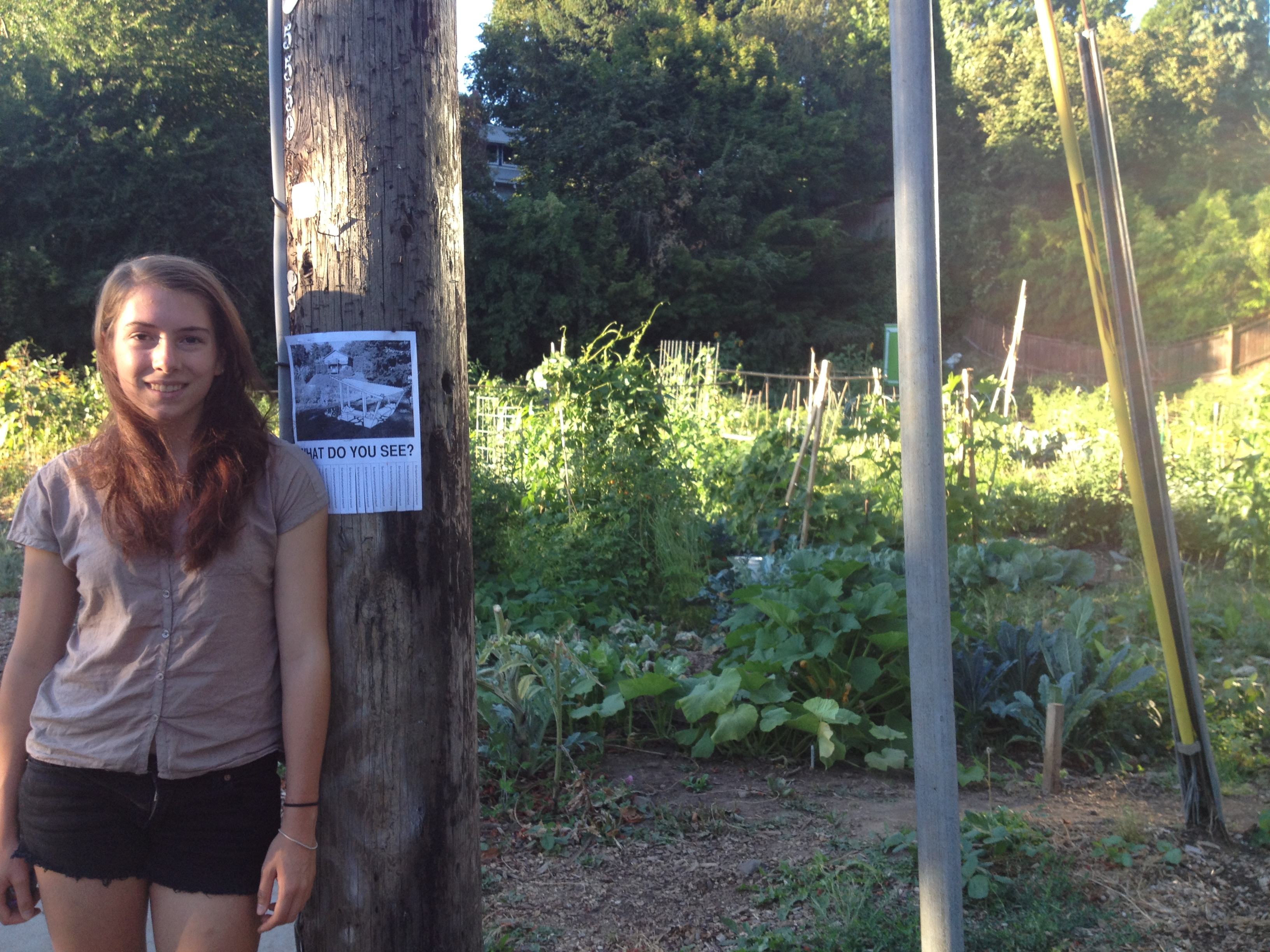
At some point during the past few weeks, all three tracks of my summer project picked up simultaneously, and my days have been a whirlwind ever since. As I write this post, I can however reflect upon one aspect of my summer project that recently wrapped up.
Today, I attended the last meeting of my five-week architecture course at PSU. A very basic introduction, the course touched upon a variety of subjects that shape architectural theory and practice. Lectures, videos, and discussions covered topics ranging from the roles of fashion, technology, and consumerism in building design, to deeper questions regarding how design generates and communicates meaning. The course—though not the technical education I had hoped for—presented an intriguing and occasionally disheartening window into the challenging, complex, and struggling field that is contemporary architecture.
To say that my professor is disillusioned with current architectural practice would be an understatement. Because my professor believes that architecture has lost sight of its fundamental values, he challenged my classmates and I to practice deliberate and ethical architecture. In light of everything, good and bad, that I learned about architecture, my desire to pursue a career in the field remains intact. Now, I feel better equipped to attempt a postgraduate degree, and no matter where I end up, to make sure that I keep the fundamentals of architecture close at hand.
Continue reading Humanitarian Design 2: Empowering Portland Through Community Oriented Architecture, Presidents Summer Fellowship
Meet Madeline (Maddy) Wagar, Strategic Partnerships Intern
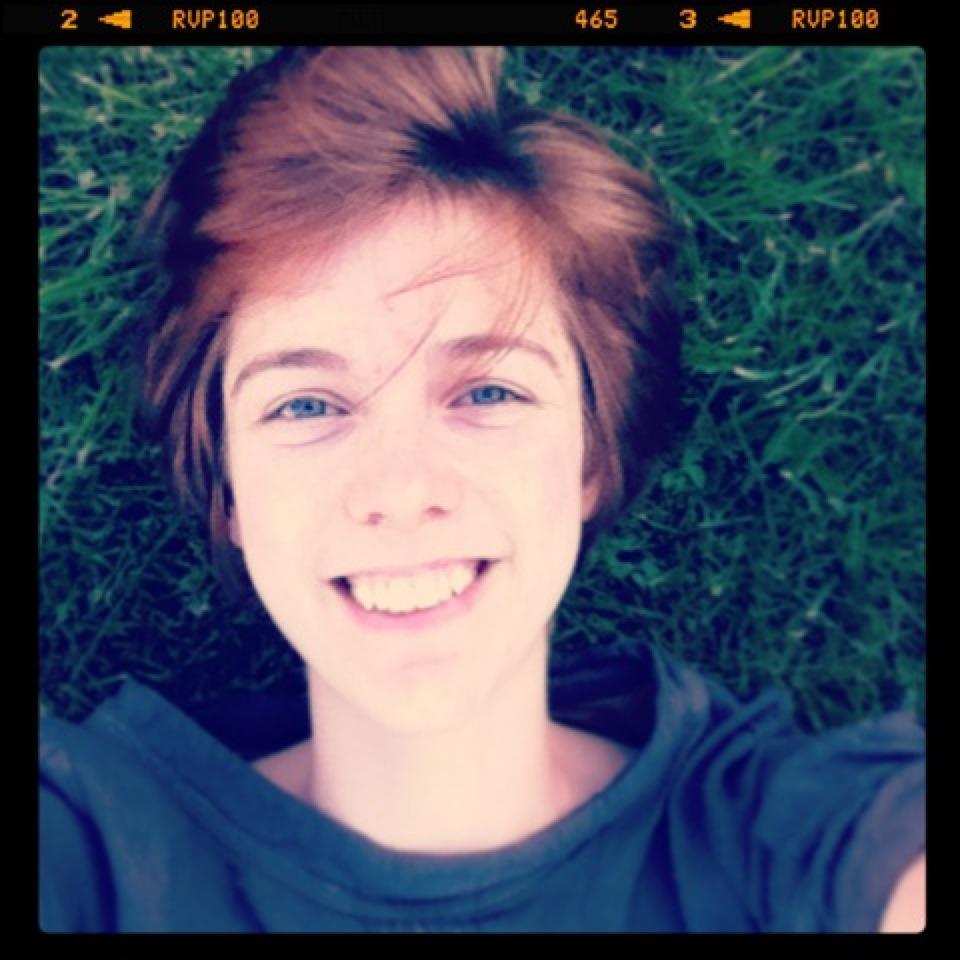
Madeline Wager, summer 2013
How’s you summer, Maddy?
Going well, working, karate, seeing friends. Work is at a BBQ place, which is funny for a vegetarian. It’s a good company, great values, a local business. I was happy to find a job without a lot of work experience, and I was only going to be there this summer.
How was your first year at Reed?
Very different from what I expected. A friend said it best: The only thing that can prepare you for a year at Reed is …. A year at Reed. It’s impossible to predict what it will be like until you do it. It was harder than I expected. I was ready for independence, excited to be away from home. Then, the reality of starting from scratch making friends, starting brand new with everything, and the work load—it was hard to make time for social life. It was tough. And, then in second semester, I started realizing that everyone else was going through the same—we all did. And, in talking about it, we all felt more settled and better.
Continue reading Meet Madeline (Maddy) Wagar, Strategic Partnerships Intern
Using Reed Externships to Secure Summer Internships, Rachel Yahn '14
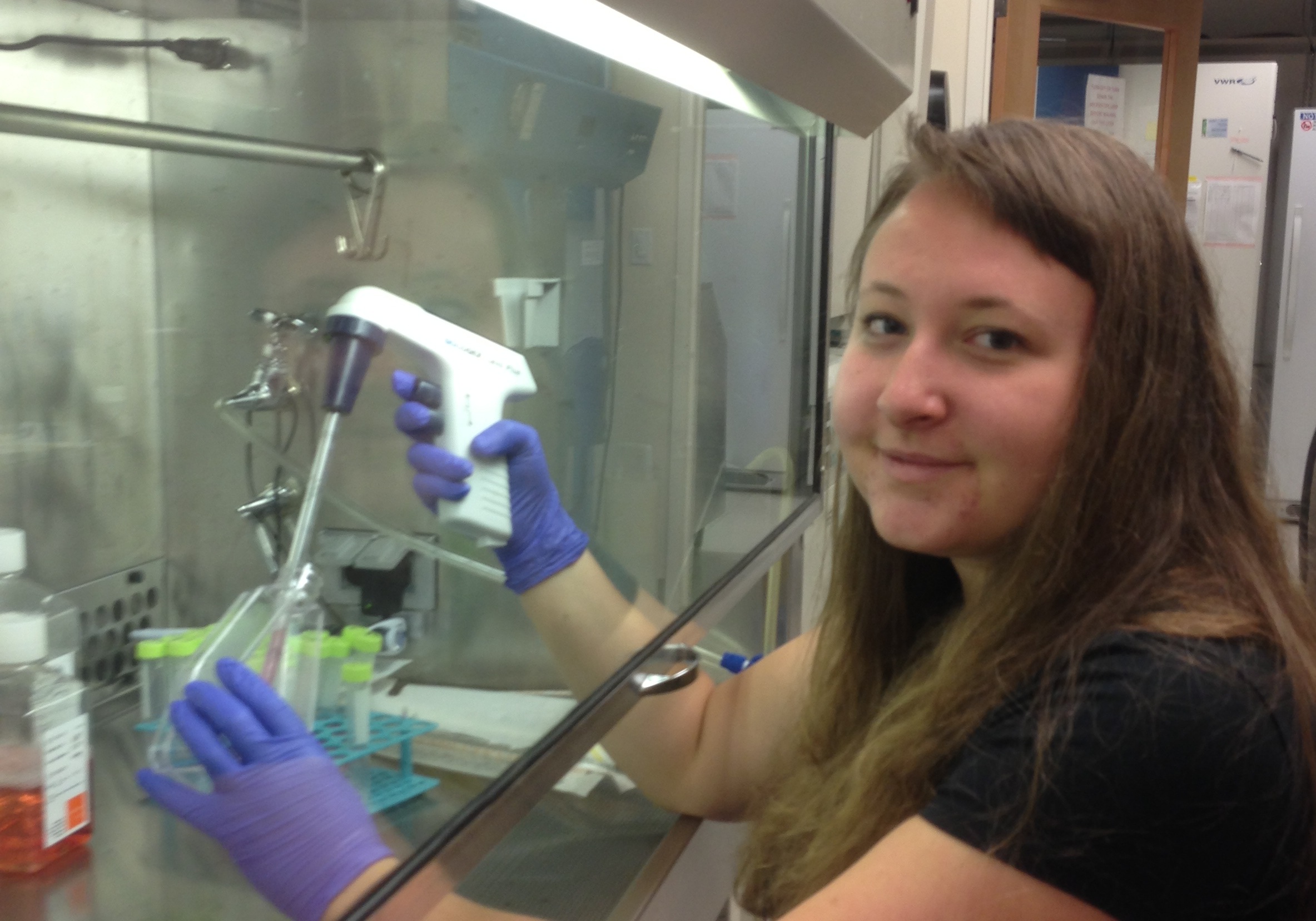
You did a couple of Reed Winter Externships last year. Could you tell us what, if any, role they played in your getting your summer internship this year?
I knew I wanted to work in a lab this summer, but it was difficult to write intelligently about why I wanted to work in a lab and do biomedical research without any experience in a lab. It's always hard to break into the world of science with your first research experience, as they are so competitive. My externship at NIAID with Dr. Kottilil was a stepping stone to my first research experience. Having that experience under my belt really gave me something to draw upon while writing my application essays for summer internships and I was able to show that I was confident that I wanted to do research and that I knew what it was all about. In my essays I talked about how interesting I found the research that I had observed and how I really wanted to be a part of it.
Continue reading Using Reed Externships to Secure Summer Internships, Rachel Yahn '14
Meet Derek Owen '97
Derek, can you give a bit of background about your Reed experience?
I got interested in physics in high school, and the decision to major in it at Reed was a bit arbitrary. At Reed, I was drawn to music, and spent a lot of energy there. After graduation, I spent a lot of time doing music, played in bands, worked hard to establish a career and finally decided that music wasn’t a life that I imagined being able to sustain. During the time doing music, I was in NYC, working a job I hated, playing music. The joints in my fingers swelled and I couldn't move them. I had a two-week period where I couldn't play. I decided to leave New York and headed to Los Angeles.
Continue reading Meet Derek Owen '97
Technical Documentation Sigenics, Inc.
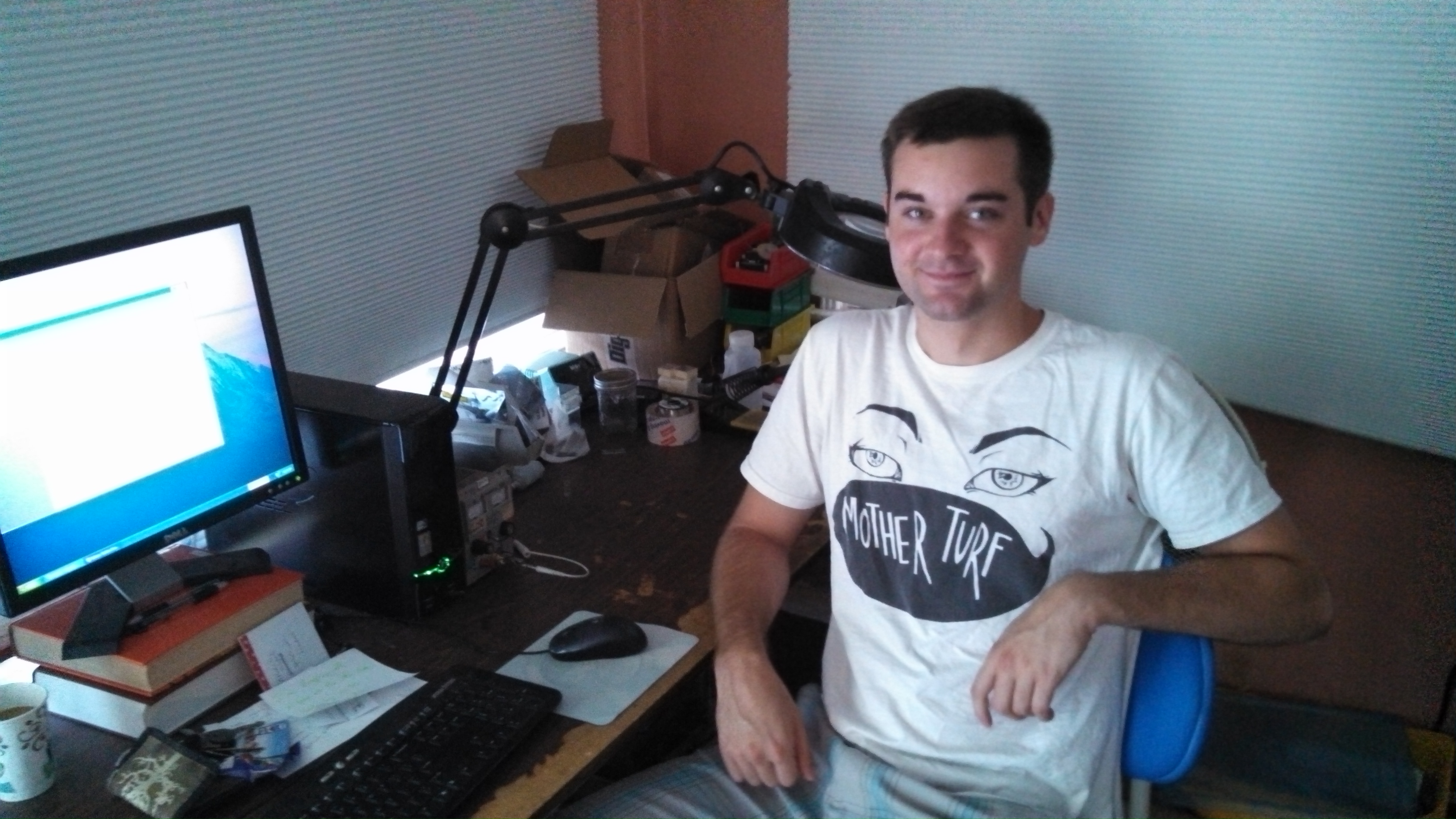
Aaron at work at Sigenics
Greetings from Sierra Madre, California, where I am currently interning at Sigenics Inc., a company excelling in the creation of custom silicon devices. When I first read the name ‘Sigenics Inc.’, I pretty much expected to find myself working amongst bustling lab-coated technicians scurrying around a clinically clean facility maintained by Wall-E-esqe robots... As it turns out, the Sierra Madre branch of Sigenics Inc. is more low-key—including me, it's a 3 man operation here, stationed in the guest house of my boss, the venerable Douglas Kerns. As far as bosses go, he’s awesome, the atmosphere is always relaxed, perhaps a side effect of working in this beautiful Los Angeles suburb. Doug tells me the Sierra Madre branch formed because he didn’t want to move out to Chicago—where the main facility of Sigenics is located—because the weather in SoCal was too nice to leave. Amen. Even after spending nearly every summer of my life here, I still don’t tire of it. Not long ago a Reed friend asked me, “Aaron, how come you never stay in Portland for summer? It gets so nice.”
“Well,” I replied, “it’s like that in L.A., too, we just call it ‘normal.’”
Continue reading Technical Documentation Sigenics, Inc.
Presidents Summer Fellowship, Reconstructive Improv 2
It’s hard to believe that nearly three weeks have passed since I wrote my last blog post for Works and Days. Here in San Francisco, time has been flying by, and the workshop I’ve been participating in at the SF Conservatory of Dance is almost over. When I last wrote, I was nearing the end of the first half of the program, and had been busily taking classes in a variety of different contemporary dance idioms. In the second half of the workshop, the focus has narrowed and my classmates and I have been immersed in the improvisational and choreographic techniques of choreographer William Forsythe. While we haven’t been working with Forsythe directly, our exploration has been guided by a trusted representative of the choreographer (and a brilliant artist in his own right), Alessio Silvestrin. Having studied Forsythe and his choreography extensively for my final paper in Professor Hannah Kosstrin’s Dance 201 class, I had some idea of what to expect going into this part of the workshop, but it has still been incredibly challenging.
Continue reading Presidents Summer Fellowship, Reconstructive Improv 2
Notes from Wehrli Lab, OHSU
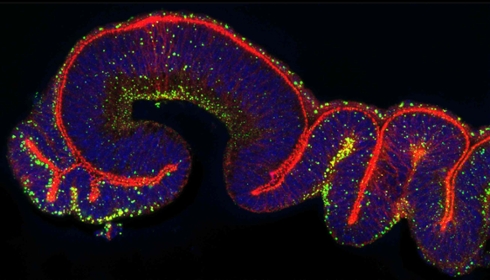
Fluorescence image of Drosophila wing disc in cross-section. Cell nuclei in blue, membranes in red, and a protein complex unique to Wnt signaling in green.
After several weeks in a fruit fly lab, I now feel quite confident in my ability to dissect larvae, create new crosses from different fly strains, and prepare tissues for microscopic imaging. Although I had never performed these techniques just two months ago, I now carry them out from memory on a regular basis. Without realizing it, I have learned how to identify many of the common Drosophila mutants that are used to create experimental crosses. I am also learning how to combine various protein or RNAi constructs in a single Drosophila line in order to interrupt or better visualize components of the Wnt signaling pathway. However, the most amazing thing to me is how much my dissection skills have improved. On my first day, I was shocked that I would be expected to remove organs from a larva only two or three millimeters long. Now, I can perform the task readily, although not nearly as quickly as my more experienced co-worker, Misha. I still have a lot to learn about the mechanisms involved in Wnt signaling. Understanding the research is far more difficult than simply carrying out the procedures. While I now know quite a bit about working with fruit flies, the complexities of the signaling pathway still elude.
Continue reading Notes from Wehrli Lab, OHSU
Food Scouts Internship at Lents Farmers' Market
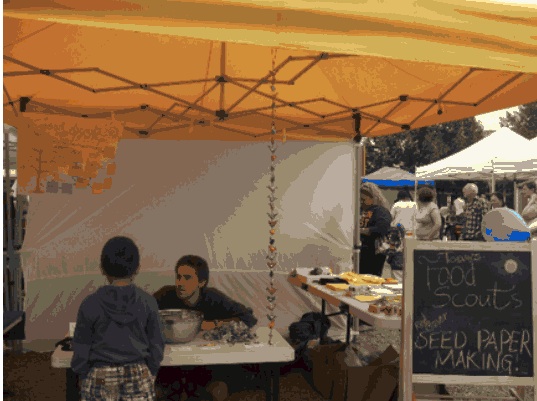
Volunteer Jimmy Villafranca (Reed '12) talks with the kid of a vendor before market begins Sara Post
I remember going to farmers' markets as a kid in central Pennsylvania. I remember being six and sulking at the knees of my father. Being at the market meant being stuck in a wave of grown-ups watching the straw bag at his side fill with green foods that I did not yet know how to convert into meals I would want to eat.
Working actively to reverse this—to get kids excited about farmers' markets and fresh vegetables on a large scale—is a worthy mission I have the opportunity to take on thanks to Reed’s Internship Advantage program. Reed has partnered with Zenger Farm to find a seasonal intern to develop the brand new “Food Scouts” program at the Lents International Farmers Market each Sunday. Geared for youth ages 5-12, Lents gifts each Food Scout with two $1 tokens to spend on vegetables, fruit, or food producing plants. Meanwhile, the scouts hang out at the Food Scout booth and participate in activities. They also get journals to take home and write or draw about produce. Underlying the play, the goal is the engage kids in the market—teach them why to care about plants, how to spend wisely, introduce them to other youth of the community.
Continue reading Food Scouts Internship at Lents Farmers' Market
SOIL Internship, Haiti
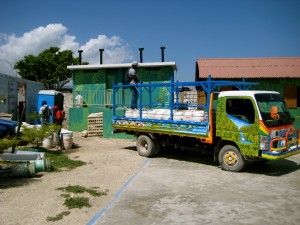
With funding from the Reed College Internship Advantage Initiative, for eight weeks this summer I am working as the social media and outreach intern for the 501(c)3 non-profit organization Sustainable Organic Integrated Livelihoods (SOIL), started by the inspiring Reed alumna Sasha Kramer. SOIL uses methods of ecological sanitation (EcoSan) to mitigate the ongoing sanitation crisis in Haiti that was only worsened by the 2010 earthquake. One of their most promising projects is the implementation of EcoSan toilets that turn human waste into much needed compost for sustainable agriculture.
Haiti came into the international limelight after the earthquake, and it seemed that every journalist and pundit felt entitled to present the public with their half-baked theories about why poverty persists in Haiti. International commentators have gazed at the Haitian poor with a mixture of disgust, pity, and fascination for centuries. In a 2010 New York Times article, David Brooks suggests that “Haiti, like most of the world’s poorest nations, suffers from a complex web of progress-resistant cultural influences.” And although he does recognize that Haiti has “a history of oppression, slavery, and colonialism,” he points out that “so does Barbados, and Barbados is doing pretty well.” His analysis, like too many others, blames the victim and clearly ignores the particular history of colonization, slavery that has brutalized so many Haitians, starting with the indigenous population that was decimated by the Spanish in the mid-sixteenth century. Brooks cites the “progress” of Barbados without explaining who is benefiting from that “progress.” Barbados has been hospitable to tourism and transnational capital, but their economy still favors accumulation of capital with the elite classes and the benefits of tourism are not necessarily distributed equitably. It is not justified for arrogant observers like Brooks to patronizingly define universal “progress” and dictate what that should mean to Haitians.
Continue reading SOIL Internship, Haiti
Welcome to Works and Days
Works & Days is a blog created to highlight the adventures of Reed students and alumni in the world that lies beyond campus. By featuring first-person experiences in externships (job shadows), internships, work during the school year and during breaks; through engagement with the Portland community, with the northwest, and far beyond, Works & Days may be a How To and sometimes might tell a cautionary tale. Lessons learned, challenges overcome, amazing experiences longed for and unanticipated will make their way to this blog.
Continue reading Welcome to Works and Days
Commerce Kitchen, Sofia Wright
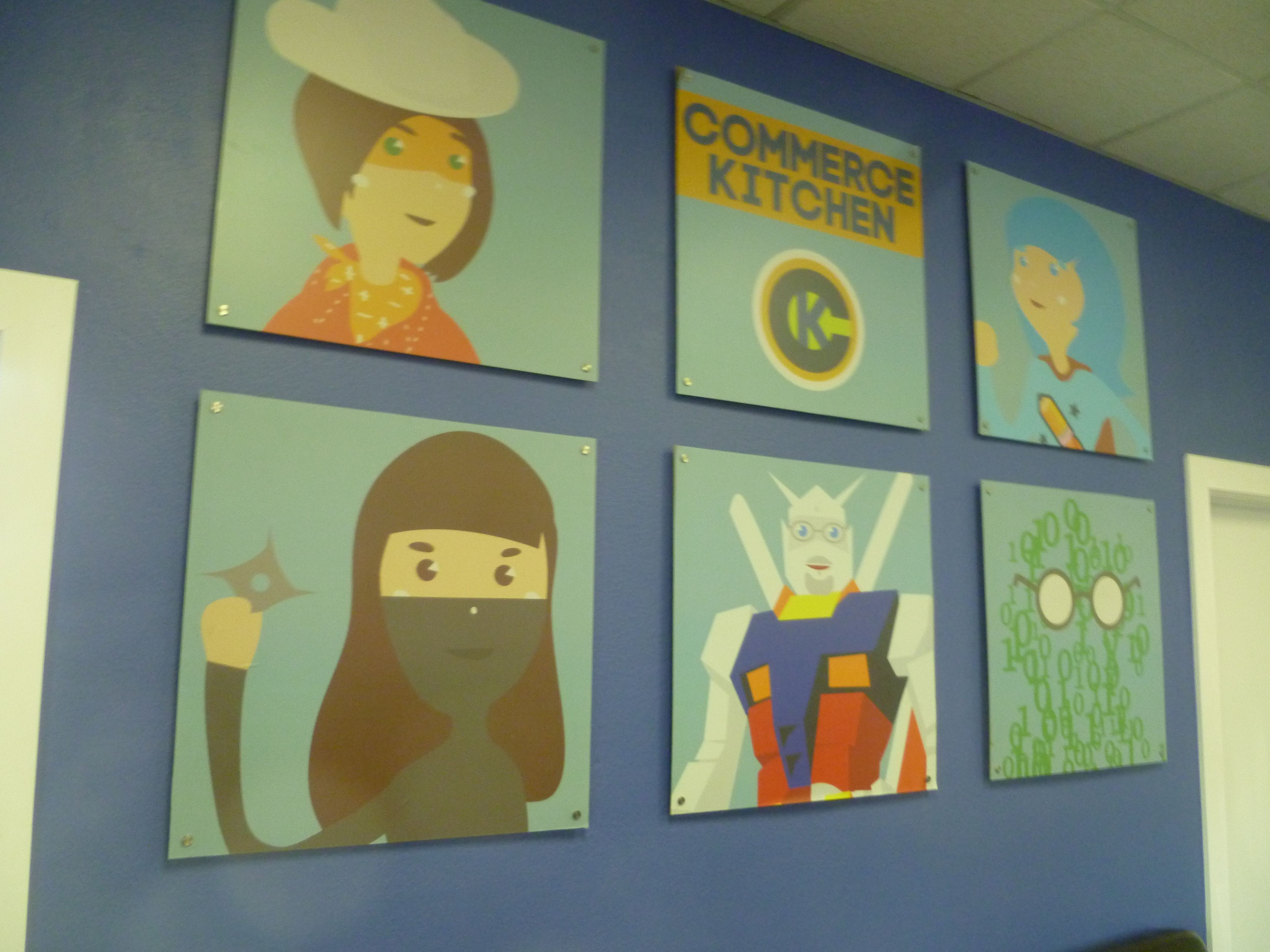
I am currently an intern at Commerce Kitchen, a web development and marketing company in Denver. My fellow intern (and fellow Reedie) Rebecca and I get to work there, and explore the city in our free time, for nine weeks this summer. The experience marks many firsts for me. First time visiting Denver. First summer living away from home. First paid internship. First experience working in marketing. And here, my first blog entry; it only makes sense to talk about my first impressions.
Continue reading Commerce Kitchen, Sofia Wright
The Reed College Peer-Reviewed Journal, Presidents Summer Fellowship
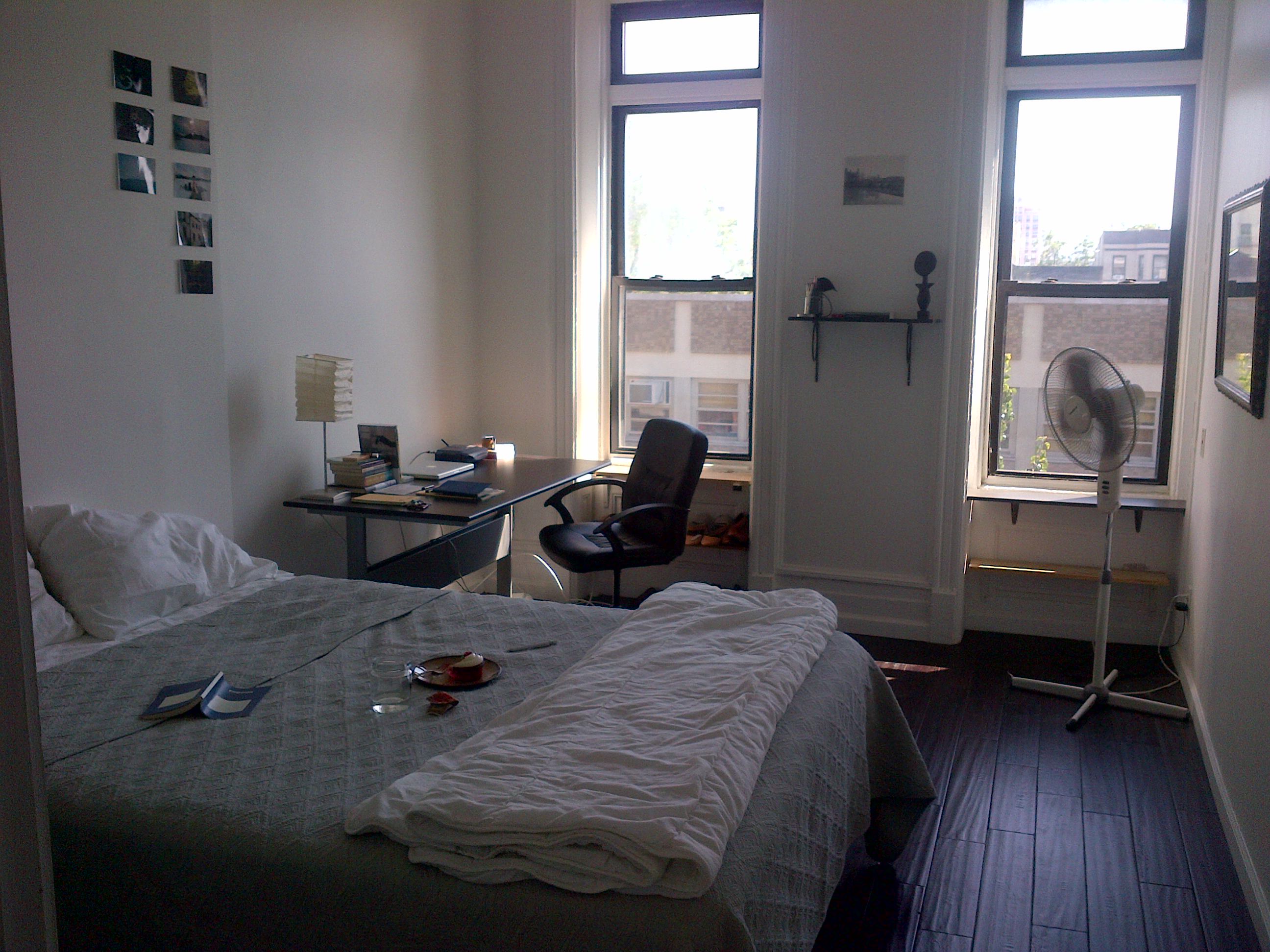
The context for my President's Summer Fellowship engages three distinct elements, which combined, will serve to inform the final goal, the production of a new, peer-reviewed journal that will engage the diverse voices of Reed’s students, faculty, and staff, spanning all departments. The elements include: To work as an intern at one of the seven internships at both literary magazines and publishing houses to which I have applied, in order to acquire the necessary skills to develop the foundation for a journal of this nature and to become well versed in the responsibilities of managing a publication. Secondly, I will conduct research at various colleges like Sarah Lawrence and Goucher College, who are already producing similar successful publications, and lastly, I will return to propose and implement my work here at Reed.
Continue reading The Reed College Peer-Reviewed Journal, Presidents Summer Fellowship

